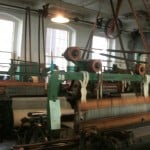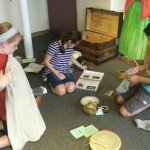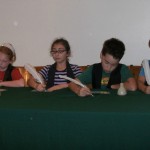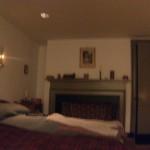Can you imagine the mills, in Lowell Massachusetts, being so loud you can hear them from 5 miles away? These mills ran along the Merrimack River. Making thread and cloth was the purpose of most of the mills. This is the third year the fourth graders have visited the Tsongas Museum in Lowell which is located in the Boot Cotton Mill building.
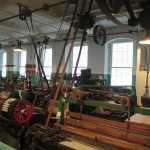 Klunk Ka-Klunk Ka-Klunk Ka-Klunk. Imagine the noise of of hundreds of machines in just one mill, while we heard only 20 looms, which was very loud in the Boot Cotton Mill. One of the many activities was listening to a story about a mill girl who slid off the banister and fell four stories. Her name was Lizzie Ryan. Nobody really knows the outcome of that terrible accident, but we can infer that if she survived, she was very, very, badly hurt.
Klunk Ka-Klunk Ka-Klunk Ka-Klunk. Imagine the noise of of hundreds of machines in just one mill, while we heard only 20 looms, which was very loud in the Boot Cotton Mill. One of the many activities was listening to a story about a mill girl who slid off the banister and fell four stories. Her name was Lizzie Ryan. Nobody really knows the outcome of that terrible accident, but we can infer that if she survived, she was very, very, badly hurt.
Lowell, Massachusetts, was and still is a destination of many immigrants. We were told to pretend we were immigrants at Ellis Island and to make two lines: one boys and one girls. We received passports, which contained our immigrant’s name, date of birth, date we arrived,  country we were coming from, and reason we emigrated. The immigrant officer, asked us how we said “hello”, our name, where we were coming from and when we came. Following our interview we saw 5 signs which read: “War,” “Family,” “Education,” “Jobs,” and “Famine.” The officer asked the immigrants to gather around the signs that best represented the reason for emigrating. This is how we said ‘Hello’ in our six different languages:
country we were coming from, and reason we emigrated. The immigrant officer, asked us how we said “hello”, our name, where we were coming from and when we came. Following our interview we saw 5 signs which read: “War,” “Family,” “Education,” “Jobs,” and “Famine.” The officer asked the immigrants to gather around the signs that best represented the reason for emigrating. This is how we said ‘Hello’ in our six different languages:
Greece – γεια σας, Ireland – Dia duit, Canada – Quebec bonjour,
Cambodia – Su os dyey, Colombia – Hola, and Portugal – o’la.
Our strategy to find our fellow emigrants was nice and simple. We said ‘Hello” in our unique language, and together met up at our station with our trunks. The officer gave us instructions to open our trunks; to carefully lift our artifacts out of the trunk; and display them for everyone to see. Each group had very different artifacts. We each had an instrument and some had books. The irish had a doctor’s book and the Cambodians had Cambodian-English dictionary. It was very interesting to see what immigrants had brought to America.
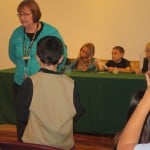 In April 1831, Lowell, Massachusetts, was experiencing challenges with the Irish immigrants’ children. A special town meeting was held to address the following proposal:
In April 1831, Lowell, Massachusetts, was experiencing challenges with the Irish immigrants’ children. A special town meeting was held to address the following proposal:
The selectmen were comprised of a priest, 2 shopkeepers, and a mill owner. A lively debate followed among the citizens of Lowell. A school teacher shared, “One day a fight broke out between a Yankee and an Irish child. I think we need a separate school for the Irish.” “I don’t want to lose my workers,” said a mill owner, “a lot would leave to go to school.” Another mill owner expressed, “I would like smarter workers” and was in favor of a new school. Everybody got a chance to stand up and express their opinion. But later we were informed that we had to be eighteen, male, and a US citizen to vote. After we found that out, we took off the votes of the people that weren’t allowed to vote, and the majority ruled that we should build the school. But, in 1831, they didn’t actually build the school immediately.
After the role-play, we took a walk over to the boarding house. The boarding house is where the Mill Girls lived when they worked. We did a scavenger hunt. Everybody had to choose one or two partners and we traveled around the boarding house trying to find rooms or items and describe them with two adjectives.
The different rooms had artifacts, such as tools and dishes in the kitchen. The kitchen had displays of meals (breakfast, dinner and supper) 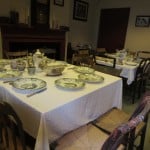 prepared for the Mill Girls, by the housekeeper, who had a small room off the kitchen. The Mill Girl’s breakfast might include fried codfish, fried hash, fried potato balls, pumpkin mush, toast and butter, apple pie and coffee with brown sugar. Dinner (served at lunch time) was the large meal of the day. They may have eaten, soup with croutons, boiled dinner of corned beef, potatoes, turnips and parsnips with horseradish sauce, pickles, homemade bread, bread pudding, coffee with milk and brown sugar and water. A light meal at supper could be baked beans and pork, homemade rye bread with bacon and cheese, fried potatoes, flap jacks with applesauce, baked indian pudding with cream, plain cake, tea with milk and brown sugar, and water. With only 30 minutes to eat breakfast and dinner, they managed to eat a awful lot of food.
prepared for the Mill Girls, by the housekeeper, who had a small room off the kitchen. The Mill Girl’s breakfast might include fried codfish, fried hash, fried potato balls, pumpkin mush, toast and butter, apple pie and coffee with brown sugar. Dinner (served at lunch time) was the large meal of the day. They may have eaten, soup with croutons, boiled dinner of corned beef, potatoes, turnips and parsnips with horseradish sauce, pickles, homemade bread, bread pudding, coffee with milk and brown sugar and water. A light meal at supper could be baked beans and pork, homemade rye bread with bacon and cheese, fried potatoes, flap jacks with applesauce, baked indian pudding with cream, plain cake, tea with milk and brown sugar, and water. With only 30 minutes to eat breakfast and dinner, they managed to eat a awful lot of food.
The Mill Girls lives were regulated by bells. The mill bell tower tolled 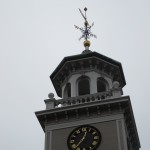 to tell the girls when to work, when to eat and when to go home. The bells rang at:
to tell the girls when to work, when to eat and when to go home. The bells rang at:
4:30 am - wake up
5:00 am - begin work at mill
7:00 am - return to boarding house for breakfast
7:30 am - return to mill
12:00 pm - return to boarding house for dinner
12:30 pm - return to mill
7:30 pm - end of work day
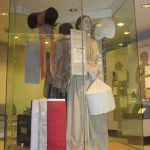 The Mill Girls returned to the boarding house for supper and had to be in bed at 10:00 pm. They did this 6 days a week and on Sunday’s after attending church, they were free to shop, attend lectures or do whatever they wanted.
The Mill Girls returned to the boarding house for supper and had to be in bed at 10:00 pm. They did this 6 days a week and on Sunday’s after attending church, they were free to shop, attend lectures or do whatever they wanted.
A law was past that the Mill Girls could only work 10-hours a day instead of fourteen. On top of that, imagine living in a cramped boarding house, working in a room with hundreds of machines, and working ten-hours a day for years. The Mill Girls were hard working, proud, and educated.
We enjoyed this trip to Lowell. The immigration 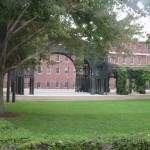 activity seemed to be especially popular. It was interesting to unpack luggage from other countries. We enjoyed taking pictures in the immigration room of timelines and contents of the bags. We liked the town meeting role play as well; it was fun to pretend and dress-up as citizens of Lowell in 1831 and to discuss a controversial issue. We also enjoyed exploring the large boarding house. It was interesting to see sample meals from back then and see the Mill Girls’ bedrooms. The fourth graders this year seemed to like the field trip, and maybe you will, too!
activity seemed to be especially popular. It was interesting to unpack luggage from other countries. We enjoyed taking pictures in the immigration room of timelines and contents of the bags. We liked the town meeting role play as well; it was fun to pretend and dress-up as citizens of Lowell in 1831 and to discuss a controversial issue. We also enjoyed exploring the large boarding house. It was interesting to see sample meals from back then and see the Mill Girls’ bedrooms. The fourth graders this year seemed to like the field trip, and maybe you will, too!
Reported by: Paige, Will, Alexis, and Maiya
